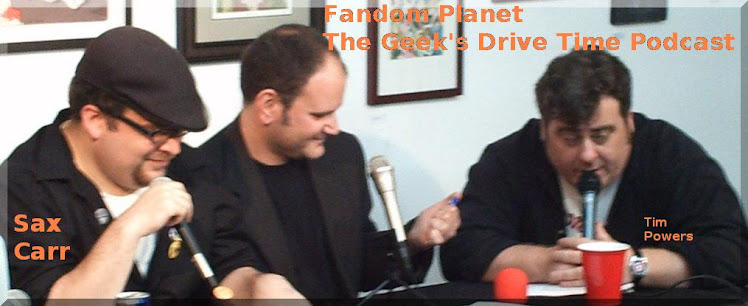We talk with the boys from Studio 407 comics about their new projects including the upcoming collected edition of “Night and Fog”. Then we talk about the glory of Hammer films, the future of Comic Book inspired films, and the tribulations of small-press publishing. Is it easier to get into Film & TV than Comics? Tune in and see
The development of a non-returnable "direct market" distribution system in the 1970s coincided with the appearance of comic-book specialty stores across North America. These specialty stores were a haven for more distinct voices and stories, but they also marginalized comics in the public eye. Serialized comic stories became longer and more complex, requiring readers to buy more issues to finish a story. Between 1970 and 1990, comic-book prices rose sharply because of a combination of factors: a nationwide paper shortage, increasing production values, and the minimal profit incentive for stores to stock comic books (due to the small unit price of an individual comic book relative to a magazine).
Though a speculator boom in the early 1990s temporarily increased specialty store sales — collectors "invested" in multiple copies of a single comic to sell at a profit later — these booms ended in a collectibles glut, and comic sales declined sharply in the mid-1990s, leading to the demise of many hundreds of stores. In the 2000s, fewer comics sell in North America than at any time in their publishing history.[citation needed] Though the large superhero-oriented publishers like Marvel and DC are still often referred to as the "mainstream" of comics, they are no longer a mass medium in the same sense as in previous decades.
While the actual publications are no longer as widespread, however, licensing and merchandising have made many comic-book characters, aside from such perennials as Superman and Batman, more widely known to the general public than ever[citation needed]. In particular, several movies and videogames based on comic-book characters have been released, and such heavily promoted events as Spider-Man's wedding, the death of Superman, and the death of Captain America received widespread media coverage.
Prestige format
Prestige format comic books are typically longer than standard comic books, typically being of between 48 and 72 pages, and printed on glossy paper with a spine and card stock cover. The format was first used by DC on Frank Miller's Batman: The Dark Knight Returns. The success of this work led to the establishment of the format, and it is now used generally to showcase works by big name creators or to spotlight significant storylines.These storylines can be serialized over a limited number of issues, or can be stand-alone. Stand-alone works published in the form, such as Batman: The Killing Joke, are sometimes referred to[by whom?] either as graphic novels or novellas.
Independent and alternative comics
Main article: Alternative comics
Comic specialty stores did help encourage several waves of independent-produced comics, beginning in the mid-1970s. The first of these was generally referred to as "independent" or "alternative" comics; some of these, such as Big Apple Comix, continued somewhat in the tradition of underground comics, while others, such as Star Reach, resembled the output of mainstream publishers in format and genre but were published by smaller artist-owned ventures or by a single artist; a few (notably RAW) represented experimental attempts to bring comics closer to the world of fine art.The "small press" scene continued to grow and diversify, with a number of small publishers in the 1990s changing the format and distribution of their books to more closely resemble non-comics publishing. The "minicomics" form, an extremely informal version of self-publishing, arose in the 1980s and became increasingly popular among artists in the 1990s, despite reaching an even more limited audience than the small press. "Art comics" has sometimes been used[by whom?] as a general term for alternative, small-press, or minicomic artists working outside of mainstream traditions. Publishers and artists working in all of these forms stated a desire to refine comics further as an art form.
Artist recognition
Some comic books have gained recognition and earned their creators awards from outside the genre. Thus Art Spiegelman's Maus won a Pulitzer Prize, and an issue of Neil Gaiman's The Sandman won the World Fantasy Award for "Best Short Story". Though not a comic book itself, Michael Chabon's comic-book themed The Amazing Adventures of Kavalier & Clay won the 2001 Pulitzer Prize for fiction.Popular interest in superheroes increased with the success of feature films such as X-Men (2000) and Spider-Man (2002). To capitalize on this interest, comics publishers launched concerted promotional efforts such as Free Comic Book Day (first held on May 5, 2002). In addition, filmed adaptations of non-superhero comic books, such as Ghost World, A History of Violence, Road to Perdition, and American Splendor, followed.
To Hear the show, click HERE





